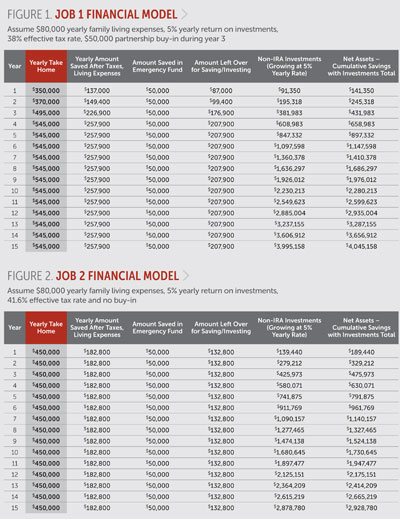Financial modeling can help orthopedic surgeons evaluate first job opportunities
Orthopedic surgeons can be idealistic when looking for their first jobs. After years of hard work and relocation, it is natural that they and their spouses seek a career opportunity that is perfect and permanent. Unfortunately, many millennial physicians do not have the time, tools or experience to accurately evaluate their first employment opportunities and ultimately are disappointed by their circumstances being different from what they envisioned. This situation can lead to significant personal and family stress, professional insecurity and financial hardship.
According to various reports, 50% to 75% of orthopedic surgeons will change jobs during their first 5 years of work, many of them switch after 2 years of practice. Although various factors, such as family circumstances and location play a role in a decision to change jobs, dissatisfaction with one’s financial situation has been shown to be one of the biggest contributors to job changes among young orthopedists.
In this column, we present a simple method surgeons can use when evaluating job opportunities.

A specific job’s financial situation is not everything. It is not uncommon for young physicians to gravitate toward the highest-paying career opportunity only to change practices a few years later when financial stressors decrease, or other situations change. Always focus on the big picture during a career search.
Compensation is often cited among the top two reasons orthopedic surgeons change employers. Although many young surgeons leave a practice because their income expectations differ from what they were paid, the situation is often worsened by the complex compensation formulas and overhead/partnership costs of the orthopedic practice setting.

Financial modeling is the process of summarizing a company’s expenses and earnings in a spreadsheet that can be used to calculate the impact of future events or decisions. Financial advisors frequently use these tools to guide decisions and estimate stock prices, relying on the same present value of future cash flows that was discussed in our last article, which addressed using insurance to protect future income from disability and death.
If you know, roughly, what you may be expected to make in each job opportunity and other costs (ie, living expenses, partnership buy-ins and taxes), a simple spreadsheet program may be a valuable tool in financially modeling your net worth in various job opportunities. If you plan to invest your disposable income, it is helpful to estimate expenses and the desired rate of return to forecast savings and compound over time.
Figure 1 is a financial model that depicts a hypothetical private practice employment opportunity with a $350,000 starting salary and $50,000 partnership buy-in during year 3. Like many private practice opportunities, income in partnership is dependent on production, but the practice provided the job candidate with an estimate. Figure 2 shows a financial model that reflects a second job opportunity with a $450,000 annual salary that is in a state with higher taxes.
The surgeon’s net worth can be graphically compared in various job opportunities (Figure 3). Although it takes time, such efforts may help the young surgeon better understand the trajectory of his or her earning potential in various job settings. In these examples, although Job 2 had a $100,000 higher starting salary, after 3 to 4 years the two job opportunities break-even financially, with Job 1 having a far higher trajectory for long-term earnings growth. This exercise allows young surgeons to model a “worst-case” and “best-case” scenario for each employment offer.

Searching for a job as an orthopedic surgeon can be stressful. The financial aspects of a job should never be the most important factor. However, too often, young surgeons poorly understand their compensation expectations prior to signing, which may lead to discontent. Financial modeling is a simple tool that may help physicians make better decisions when evaluating different opportunities.

- References:
- Mir HR, et al. J Orthop Trauma. 2011;doi:10.1097/BOT.0b013e318237bb2d.
- Smith AA, et al. Hand (N Y). 2006;doi:10.1007/s11552-006-9000-8.
- Wealth Protection Planning for Orthopaedic Surgeons or Wealth Management Made Simple are available free in print or by e-book download by texting OT19 to 555-888 or at www.ojmbookstore.com. Enter code OT19 at checkout.
- For more information:
- Sanjeev Bhatia, MD, is an orthopedic sports medicine surgeon at Northwestern Medicine in Warrenville, Illinois. He can be reached at email: sanjeevbhatia1@gmail.com.
- David B. Mandell, JD, MBA, is an attorney and founder of the wealth management firm OJM Group www.ojmgroup.com. You should seek professional tax and legal advice before implementing any strategy discussed herein. He can be reached at mandell@ojmgroup.com or 877-656-4362.
Disclosures: Bhatia and Mandell report no relevant financial disclosures.

